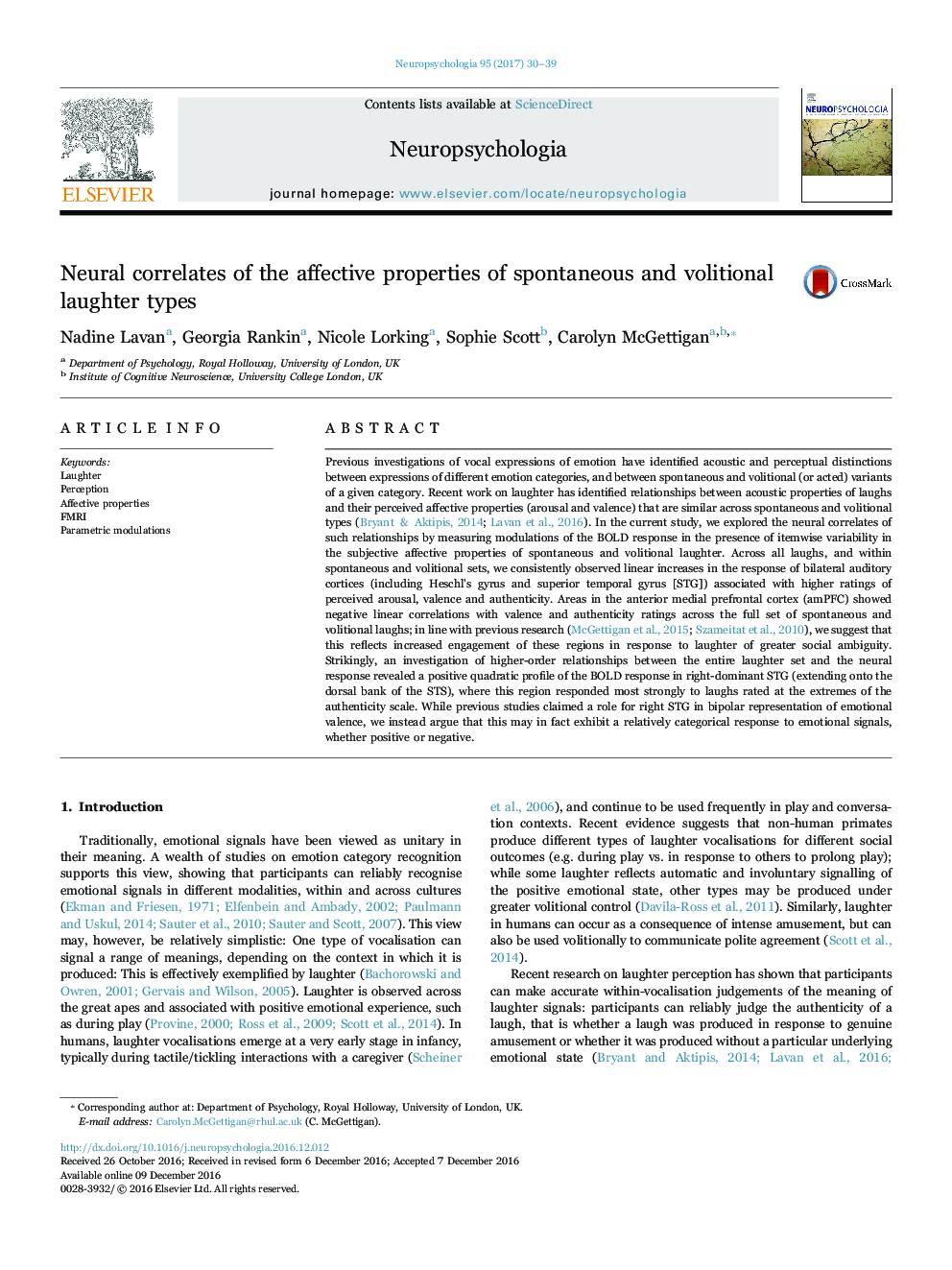| کد مقاله | کد نشریه | سال انتشار | مقاله انگلیسی | نسخه تمام متن |
|---|---|---|---|---|
| 5045183 | 1475560 | 2017 | 10 صفحه PDF | دانلود رایگان |
- We probed modulation of BOLD by itemwise perceptual qualities of laughter.
- Auditory cortices responded more to higher arousal, valence, and authenticity.
- Right STS was most active for items at the extremes of the authenticity scale.
- Anterior medial prefrontal cortex responded most strongly to low authenticity items.
- We suggest rSTS is sensitive to laughter salience, and amPFC to social ambiguity.
Previous investigations of vocal expressions of emotion have identified acoustic and perceptual distinctions between expressions of different emotion categories, and between spontaneous and volitional (or acted) variants of a given category. Recent work on laughter has identified relationships between acoustic properties of laughs and their perceived affective properties (arousal and valence) that are similar across spontaneous and volitional types (Bryant & Aktipis, 2014; Lavan et al., 2016). In the current study, we explored the neural correlates of such relationships by measuring modulations of the BOLD response in the presence of itemwise variability in the subjective affective properties of spontaneous and volitional laughter. Across all laughs, and within spontaneous and volitional sets, we consistently observed linear increases in the response of bilateral auditory cortices (including Heschl's gyrus and superior temporal gyrus [STG]) associated with higher ratings of perceived arousal, valence and authenticity. Areas in the anterior medial prefrontal cortex (amPFC) showed negative linear correlations with valence and authenticity ratings across the full set of spontaneous and volitional laughs; in line with previous research (McGettigan et al., 2015; Szameitat et al., 2010), we suggest that this reflects increased engagement of these regions in response to laughter of greater social ambiguity. Strikingly, an investigation of higher-order relationships between the entire laughter set and the neural response revealed a positive quadratic profile of the BOLD response in right-dominant STG (extending onto the dorsal bank of the STS), where this region responded most strongly to laughs rated at the extremes of the authenticity scale. While previous studies claimed a role for right STG in bipolar representation of emotional valence, we instead argue that this may in fact exhibit a relatively categorical response to emotional signals, whether positive or negative.
Journal: Neuropsychologia - Volume 95, 27 January 2017, Pages 30-39
